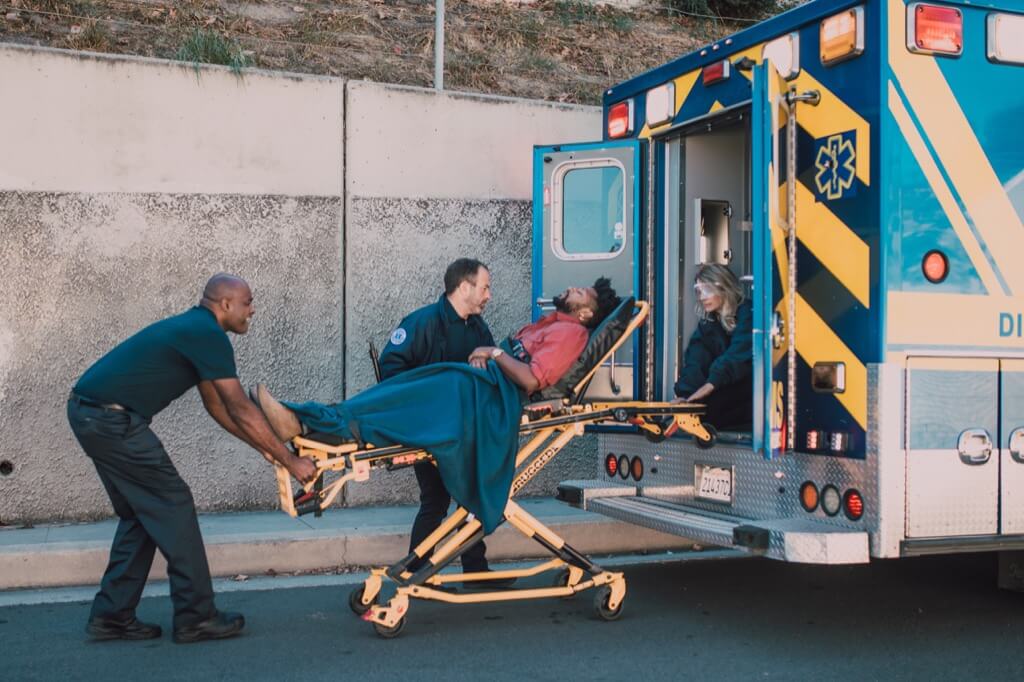False: “Mouth-to-mouth” ventilations between chest compressions are an essential part of CPR.
In reality, the American Heart Association’s 2010 guidelines changed the landscape of CPR. The outdated “15 chest compressions then 2 breaths” or “30 compressions then 2 breaths” techniques are no longer recommended. The International Liaison Committee on Resuscitation (ILCOR) analyzed extensive research, revealing that chest compressions play a crucial role in maintaining blood flow to the brain.
The heart’s pumping action generates pressure that propels blood through the circulatory system. By simulating this motion through chest compressions, oxygenated blood is circulated to vital organs. The traditional A-B-Cs of resuscitation were shifted to the C-A-B method, prioritizing circulation over breathing to improve the chances of restoring brain function.
During cardiac arrest, the brain’s oxygen demand must be met to prevent irreversible damage. Research indicates that continuous chest compressions maintain sufficient blood pressure to supply the brain with oxygen. Although oxygen is essential, excessive administration during resuscitation can be counterproductive. Recent studies advocate for a balanced approach, using room air rather than excessive oxygen for better outcomes.
Bonus Facts for Effective CPR Response
Empowering Home Assistance: Immediate CPR Significance
You can be a life-saving force, particularly at home where a significant percentage of cardiac arrests occur. Timely CPR administration can drastically improve survival rates, serving as a critical element in the chain of survival for those experiencing out-of-hospital cardiac emergencies.
Bystander Intervention Impact: Amplifying Survival Chances
Your timely intervention can be the difference between life and death. Understand how performing CPR promptly can triple survival rates, emphasizing the vital role of bystanders in providing immediate and confident assistance during critical cardiac events.
Building Confidence in Emergency Response: Overcoming Hesitations
Equip yourself with the confidence to take action during emergencies. Understand common barriers to performing CPR and how regular and up-to-date training can empower you to step in with life-saving measures when the need arises.
Understanding Cardiac Terminology: Clearing the Confusion
Distinguish between different cardiac conditions to better comprehend the gravity of each situation. Differentiate between angina and cardiac arrest, and grasp the importance of swift and appropriate responses to chest pain, ensuring the best possible outcomes for those affected.
Community Preparedness and CPR Training
Empower your community with the gift of life-saving skills. Recognize the elevated risk of cardiac arrest in specific populations and the critical importance of widespread CPR training, fostering a proactive and vigilant approach to handling emergency situations and promoting overall community well-being.
Key Steps and Tips for Emergency Response
In a critical situation where CPR is required, here’s what you can do to provide immediate assistance:
Assess the Scene and Check for Responsiveness
- Ensure the area is safe before approaching the individual.
- Assess the person’s responsiveness by gently tapping their shoulders and asking, “Are you okay?”
Call for Help and Activate Emergency Services
- If the person is unresponsive, call for help immediately.
- Dial the emergency services and provide clear information about the situation and the person’s condition.
Begin Chest Compressions with Proper Technique
- Position the person on their back on a firm surface.
- Place the heel of your hand on the center of the person’s chest, then place your other hand on top. Interlock your fingers.
Understanding Compression Rate and Depth
- Press down on the chest at a rate of 100 to 120 compressions per minute.
- Ensure the depth of each compression is at least 2 inches but not more than 2.4 inches to optimize blood flow.
Alternate Compressions with Rescue Breaths if Trained
- If you are trained in rescue breathing, provide two breaths after every 30 compressions.
- Maintain a secure seal over the person’s mouth and nose and deliver each breath over 1 second.
Continue Until Help Arrives or the Person Shows Signs of Recovery
- Keep performing CPR until medical help arrives and takes over.
- Look for signs of recovery, such as normal breathing or movement, to determine if you can stop.
FAQs About CPR and Emergency Situations
- What if I’m unsure about performing CPR? If you’re uncertain about performing CPR, it’s crucial to call emergency services immediately. The dispatcher can guide you through the steps and provide essential instructions until help arrives.
- How do I know if the person needs CPR? Look for signs of unresponsiveness and abnormal breathing. Check for a lack of pulse or signs of circulation. If the person is unconscious and not breathing normally, it’s essential to begin CPR promptly.
- Can I cause harm by performing CPR incorrectly? While it’s possible to cause some injury during CPR, the benefit of providing immediate assistance in a cardiac emergency far outweighs the risks. However, following proper training and guidelines significantly reduces the risk of harm.
- Should I stop CPR if the person starts breathing normally? If the person shows signs of normal breathing, you can stop CPR and monitor their condition closely. Ensure they are in a stable position, and wait for medical professionals to take over.
- How can I stay updated on the latest CPR techniques and guidelines? To stay informed about the latest CPR techniques and guidelines, consider taking regular CPR training courses. Additionally, frequently check reputable medical resources, attend workshops, or consult with certified CPR instructors for updated information.




